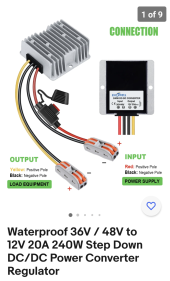bds70
New Member
So I got some great information from one of my other questions. It led me to realise I need more information.
So is there a resource that takes a beginner from purchasing cells, to testing equipment required, to software to test, to understanding the whole testing procedure and what terminology is used and what it means etc.
I want to build a whole new set of batteries. I am constrained to 12v by equipment I already have. I have 2 sets of panels each feeding to their own MPPT. I have a 400amp fuse between battery positive and lynxx Distributor the right size mega fuses for both mppt's and 2 inverters. Each inverter is Victron 3000/12/120-50.
Currently I have 2 working 340ah lifepo4 batteries and one dead one. After lots of talk with the supplier I am hopeful of getting a full refund on that battery. This would give me the funds to make my own units.
I am looking at 280ah raw cells from Jenny Wu Docan which I am led to believe is a good supplier.
So if there is such a resource please can I be pointed to the right areas.
Cheers
So is there a resource that takes a beginner from purchasing cells, to testing equipment required, to software to test, to understanding the whole testing procedure and what terminology is used and what it means etc.
I want to build a whole new set of batteries. I am constrained to 12v by equipment I already have. I have 2 sets of panels each feeding to their own MPPT. I have a 400amp fuse between battery positive and lynxx Distributor the right size mega fuses for both mppt's and 2 inverters. Each inverter is Victron 3000/12/120-50.
Currently I have 2 working 340ah lifepo4 batteries and one dead one. After lots of talk with the supplier I am hopeful of getting a full refund on that battery. This would give me the funds to make my own units.
I am looking at 280ah raw cells from Jenny Wu Docan which I am led to believe is a good supplier.
So if there is such a resource please can I be pointed to the right areas.
Cheers




